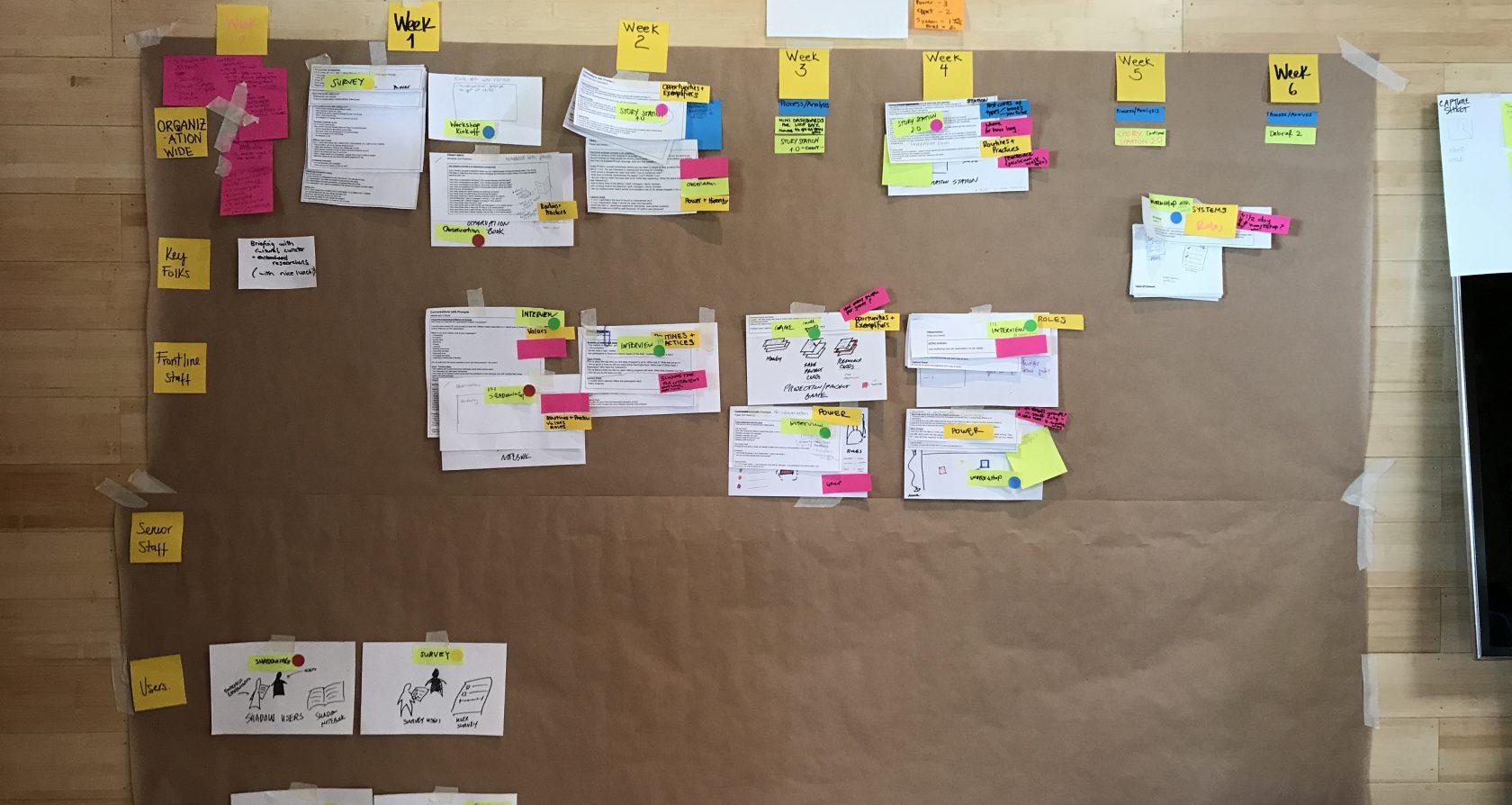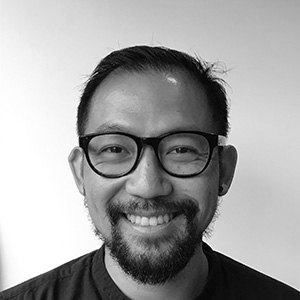Categories
I knew little about Vancouver before I arrived. When I told friends and family that I’d be taking a break from New York for a summer design fellowship with InWithForward, they exclaimed, “Oh! summer in Vancouver is supposed to be amazing.”
I arrived in June. Though the weather was rainy and a chilly, Vancouverites assured me that this was a phenomenon also known as “June-uary.”
Now it’s the end of July, and the weather is really nice. And life in Mt. Pleasant lives up to its name… it’s really F&*%ing pleasant here. No one ever seems to working, everyone’s riding bikes, the sun sets at 9:30 pm, and I’ve never seen so many interracial couples.
Every day I walk to work… Quebec to East 13th, to Main, to East 14th, to Fraser and Kingsway… and then I arrive to the back of a house, a rectangle of an old architecture studio… turned into the ‘Shed’, InWithForward’s current mission control center.
My back sweat is not only an indicator of the summer heat, but also of the amount of reflection time I’ve had… so in the spirit of summer’s blue skies, I’m pleased to share 11 of my summer hits… in the form of highlights … and a spotify playlist. Here’s a look under the hood and some tunes to accompany your summer.
Here’s the playlist:
https://open.spotify.com/user/1215422403/playlist/6cNj5x6PgwEXOblaJczwvv
And here are my highlights!
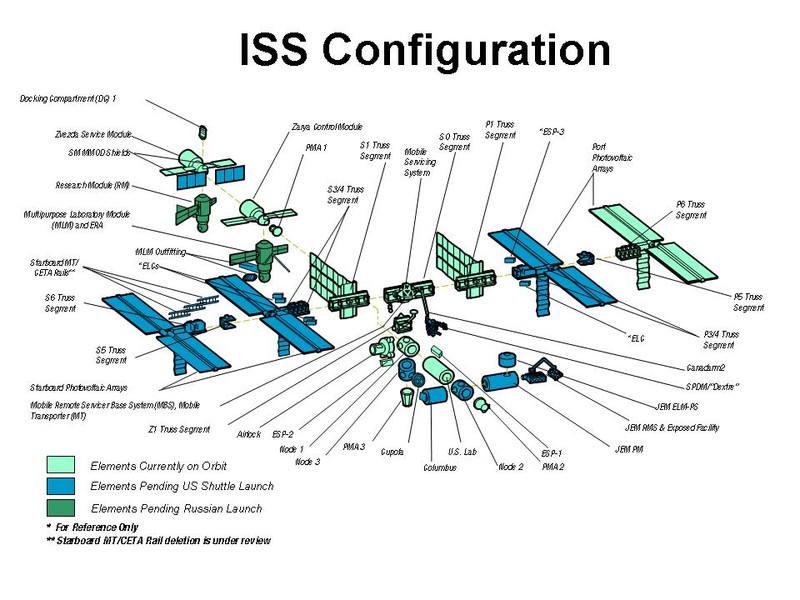
Summer Hit #1
Designing a Space Station is complicated shit.
And that’s exactly what we’re doing. The hard part is that we’re not dealing with materials…we’re dealing with a living, breathing system of people. And people are complicated.
Grounded Space is a collective of social service agencies, tired of pilots and one-off projects, who are coming together to build permanent capacity for research & development. Where most businesses spend 3-5% of their budget on R&D, most non-profits spend 0%.
We liken Grounded Space (GS) to the International Space Station (ISS). Just like the Canadians, Russians, and American astronauts dock into the ISS and use that platform to research and experiment (did you know the ballpoint pen is a space invention?), social service agencies are docking into GS. There, agency teams are supported to go on missions, research, experiment, and return their inventions to the ground. Inventions might be anything from new tools, roles, programs, social service models, community networks, etc.
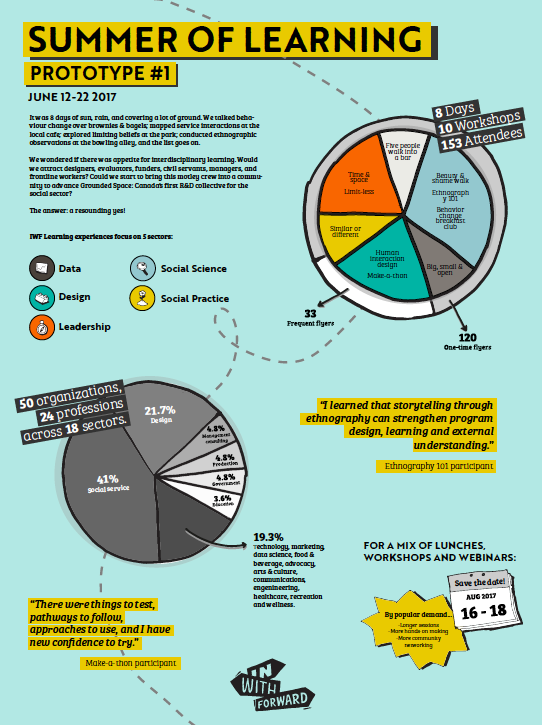
Summer hit #2
Taster offerings entice, enter, but how do they engage?
From June 12-22, 2017, Grounded Space prototyped Learning Sessions as its initial touchpoint with people. The intention was to interact with the community, understand the work and its people, network new connections, join new members, teach interested learners, learn from other experts, and broker potential talent. It was a way to develop early drafts of content that might help to guide later curriculum. It was a way to say ‘Hey Vancouver, here we are.’ It was a way to get to know who is interested? Why are they interested? And how do they want to stay engaged?
It was a rapid-fire experience, and it closed just as fast as it started. We did a quick look at the data of our participants… and then we moved forward.
How will Learning sessions continue to engage the community?

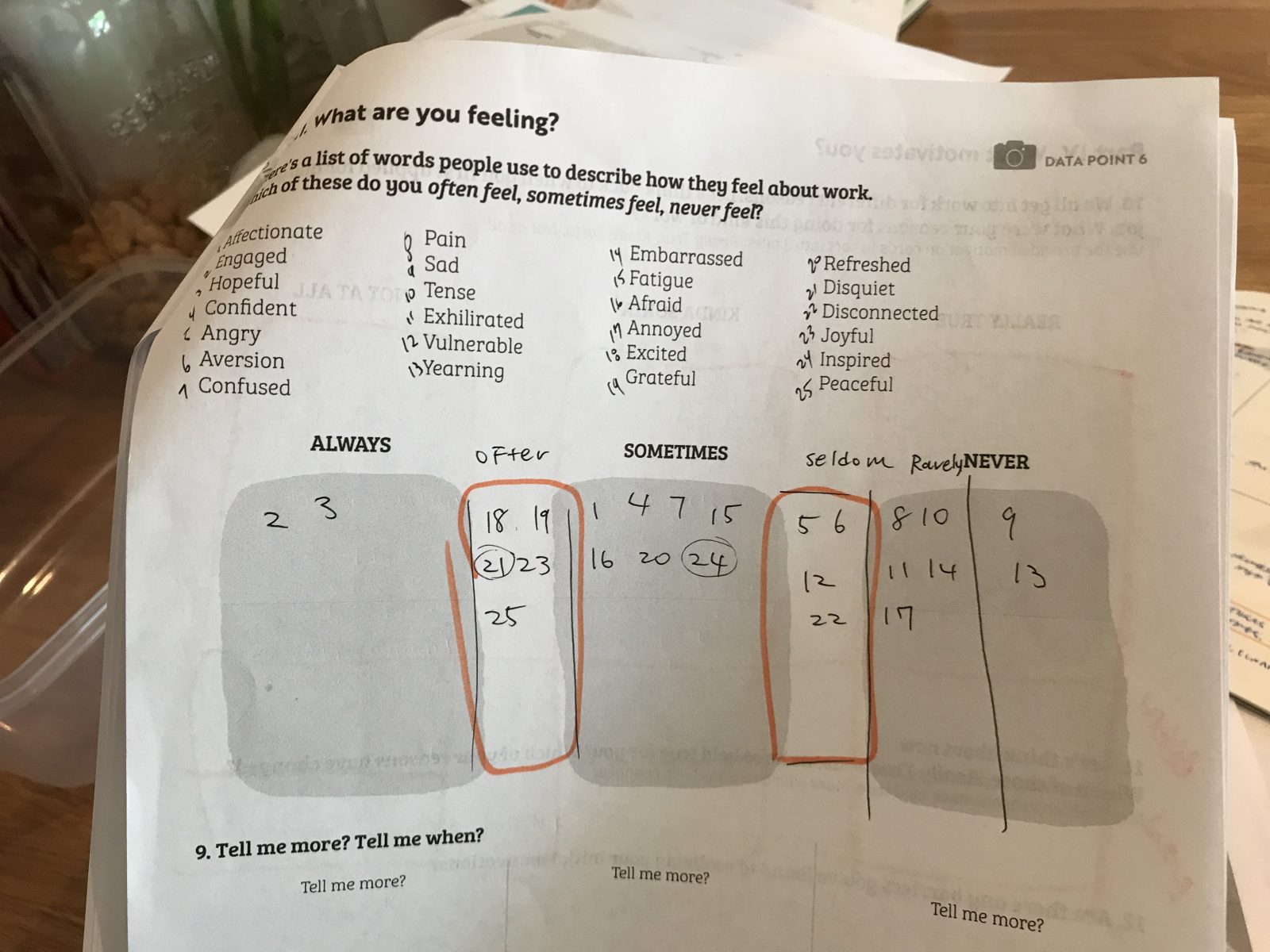
Summer Hit #3
Prototyping is NOT improvisation.
Prototypes ought to err more on the scientific and experimental end of the actions spectrum. Improvisation is ‘winging it’, unscripted actions, and can be dangerous.
Because IWF is eager to gain its traction in its hypotheses, it is a fast-paced environment. The intuition and routine is to ‘test early, test often.’ Whereas I tend to agree with this, there is an art of knowing when to test… And when you do test… what do you want to know? Like a scientific experiment, rigor and consistency are necessary.
Testing and prototyping for the sake of testing and prototyping can be a slippery slope, especially when ideas aren’t ‘flushed out’ – especially when you’re dealing in relationships. What happens is you’ll often get feedback on the thing that wasn’t ‘flushed out’… rather than get specific feedback on the intended interaction that you may have been designing for. What happens is you’ll often lost credibility.
If everything is a prototype, then what should people believe in?
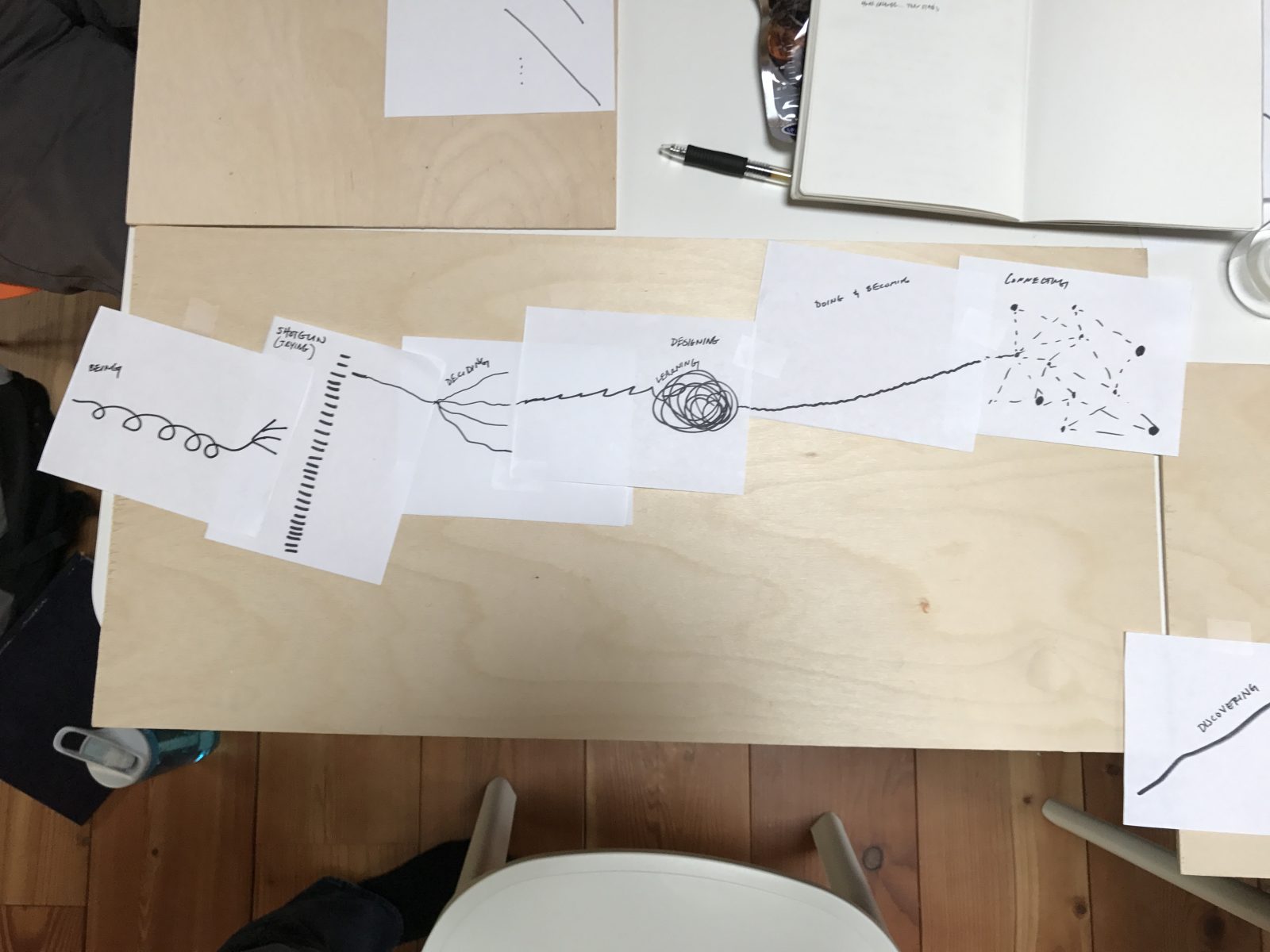
Summer Hit #3
Let stories lead.
People want to talk… to feel heard, included, acknowledged. An easy way to get people talking is to ask about transformation, growth, journeys. In the Culture curator module 1, we facilitated a sharing of experiences, by asking ‘what was your journey to today?’ The rules are relatively open-ended… we give people cards of patterns and shapes, pens, blank paper, and a board to organize their journey. It’s a beautiful exercise and a great way to get a lens on people’s lives and their way of thinking.
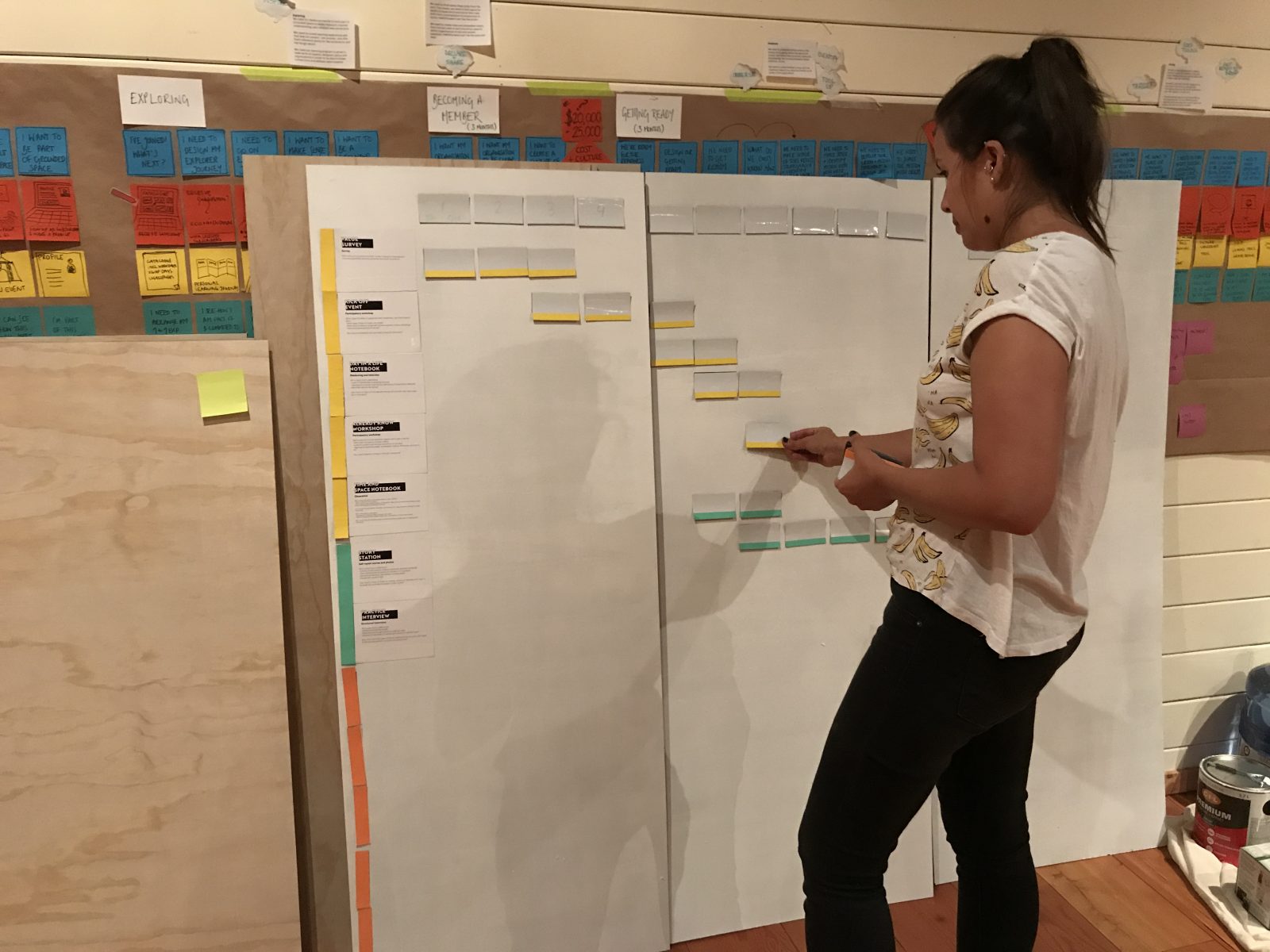
Summer Hit #4
Design for modularity.
Life spoiler alert: everything changes. Even more so at InWithForward. Could you design for the anticipated change? Could you design for multiple scenarios, different users? Can the research tools work out of order? How might we develop project management tools that have high tolerances for change?
My bang for buck learnings: use language wisely. With a slight reframe of the way we call things allows for modularity. For example, instead of calling the research tools by ‘Week 1’, ‘Week 2’ tools, we gave things the title ‘Module 1’, ‘Module 2’. This allows for using out of order.
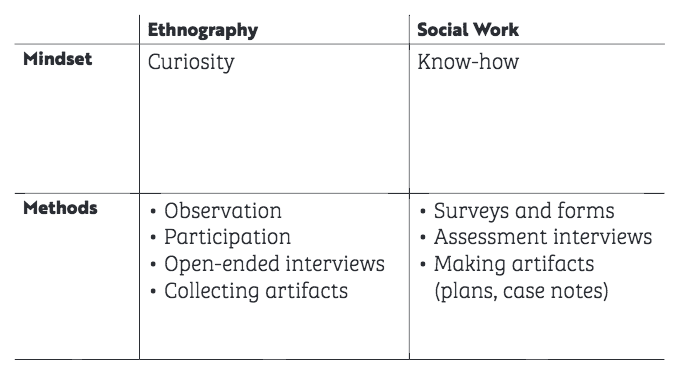
Summer Hit #5
Designing for a mindset is more than just a workshop.
We’ve been building tool after tool, after tool. But this isn’t drop shipment. We can’t expect to drop research tools in front of people and their organization, and expect it to change. It’s part education, part facilitation.
Sarah, InWithForward’s Lead of Social Impact, informs, “It’s more than just presenting new frameworks to organizational thinking, but also the mindset to carry them out.” Hence, the past 3 weeks has been dedicated to facilitating the Culture Curators new curious mindset. While this is a long process, it will help foster new ways of thinking to help reimagine their organization.
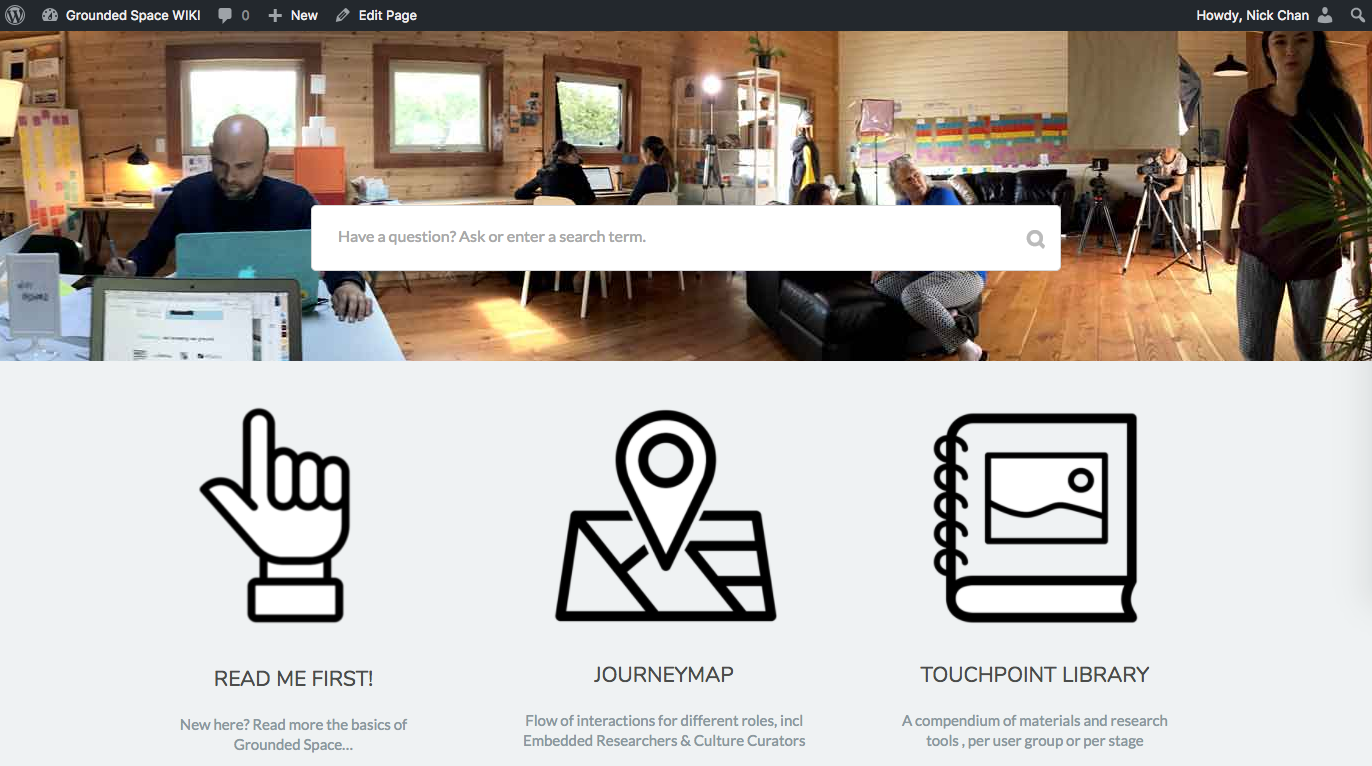
Summer Hit #6
Democratizing information and codifying rationale is complex, but necessary for flat organizations.
With a rapidly evolving team and a fast-paced development style, IWF illuminates the need for codified rationale. I can speak first hand on how difficult it was to catch up to the team here at the Shed. I couldn’t see the big picture, I couldn’t understand the intent behind each motion made. Hence, it was difficult for me to contribute in a meaningful way. We needed a method to communicate design decisions, for both internal use and client communication. With a newly prototyped wiki, Jonas suggests that we have a system to track our decision-making process, along with the resource or touchpoint that we produced. With this, we initiate three main things: (1) transparency and access of information (2) collective memory (3) the routine and practice to back-log rationale.
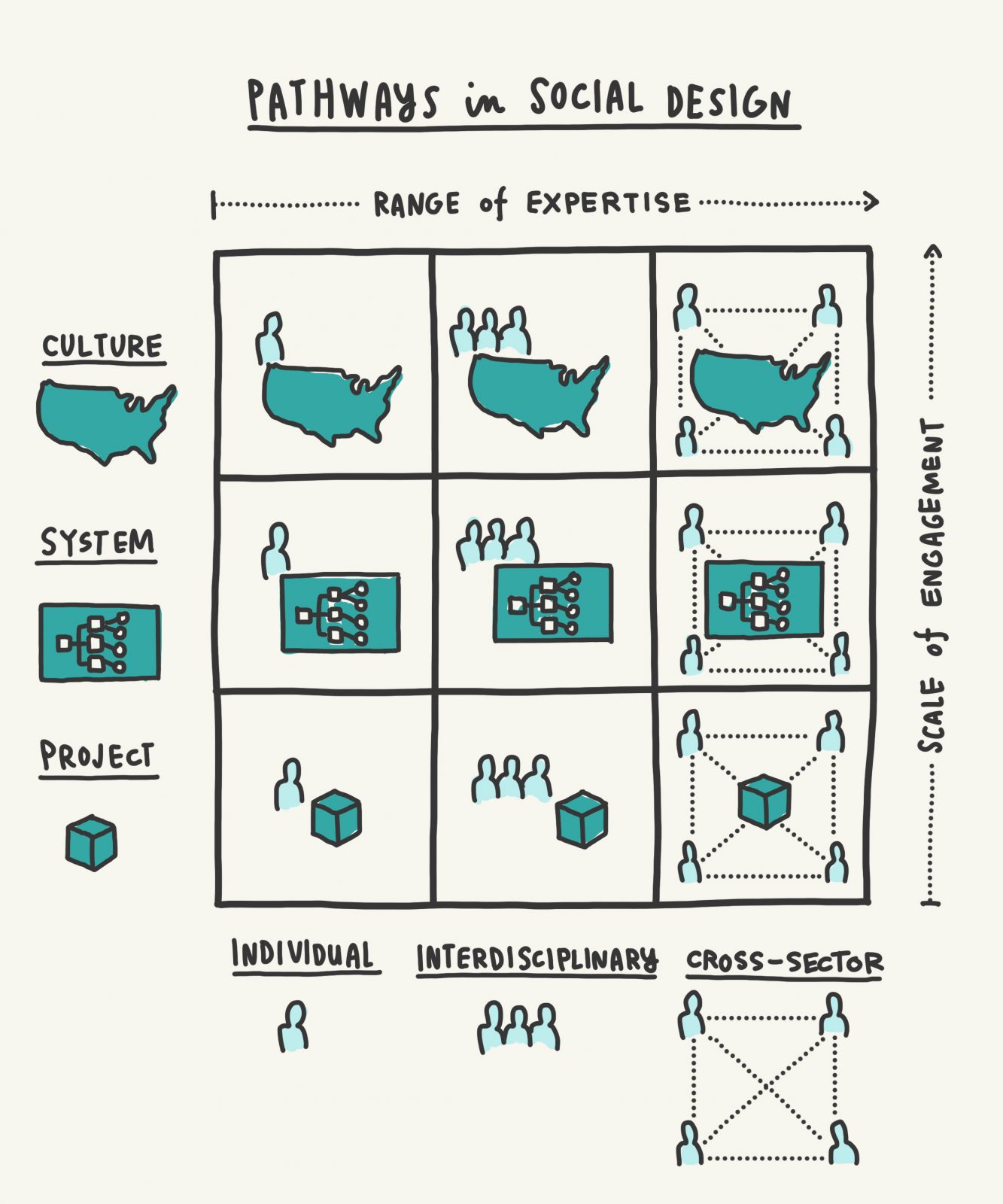
Summer Hit #7
Infrastructure is highly relational.
At the core, Grounded Space is creating new interactions by changing the way people relate to one another. In the above diagram, you can start to see the complexity of what we’re dealing with in Social Design. In order to affect system-wide, culture-wide change, the level of engagement and expertise required is high. While a lot of what we do at InWithForward is develop innovative materials (projective research tools, game designs, booklets, etc.), they are only supporting props to foster new relationships. At the core, it is highly conversational and very much about managing relationships (and their corresponding expectations).
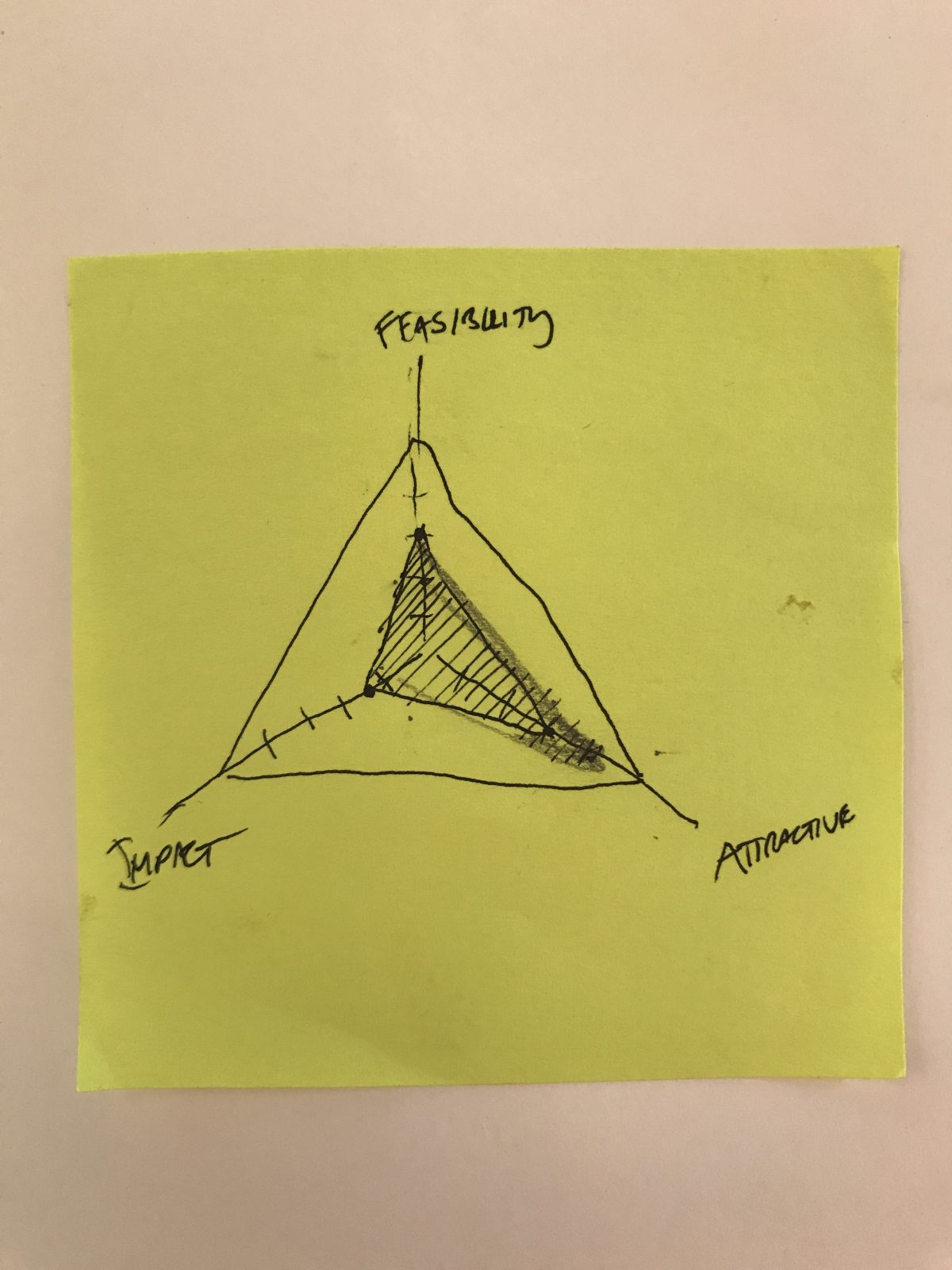
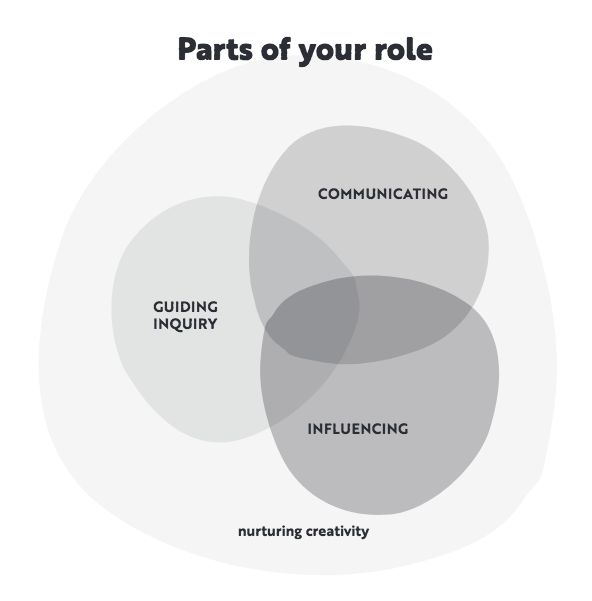
Summer Hit #8
Specificity to onboard, malleability to grow.
A couple key practices I’ve learned this summer are (1) prototyping new roles, and (2) prototyping organizations. I’ve never given that a thought before. For example, what’s a culture curator? What’s a relationship manager? What’s an embedded researcher? At first it sounded like jargon to me. Then it clicked. The ‘hats’ that we wear help determine the outcomes we can produce. The roles we play help determine the expectations around us… for better or for worse. With specific role titles such as HR assistant, account manager, or financial analyst, you develop a sense of ownership and expertise. On the other hand, it develops a siloed effect, a division of understanding, a rigidity in thinking:‘That’s your work, and that’s my work… You’re the visual thinker… you handle the money…’While titles and roles help to manage expectations and develop certain efficiencies, they can also limit the personal growth/development of teams and organizations. A common example of new roles in organizations are Chief Happiness Officers. The position has been well known to develop team efficiencies and overall empowerment in the workplace. The new role has proven invaluable to many major international companies, such as Zappos.
On the scale of complexity for mechanisms to prototype, organizations are the highest. IWF, the catalyst behind Kudoz (a prototyped organization), has shown me the infinite possibilities (and challenges) with testing the way people organize. Kudoz is an embedded social design agency is embedded within a social service agency. Amazing. Beautiful. And new. And not without its challenges. Who do you need involved to make it run? How do you project the future needs of the organization? Do you have the resources to support both the development and the delivery of the product/services offered? Basic questions, even if it’s a start up company… but as a prototype it’s even more difficult because we’re dealing in people’s livelihoods.
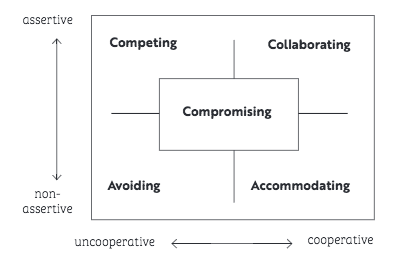
Summer hit #10
Shepherding the new is the art of compromise.
When you’re trying something new and no one in the room has done what the collective group of them are all trying to achieve, compromise is a key ability. In every decision-making point, every conversation, every action, compromise is the way forward. Whereas it’s ideal if everyone is onboard with every decision made, it’s not always the case. Collaboration can be messy. For example, some voices are louder than others, working styles vary widely, and effective communication (aligning the intention of the message to how the message is actually heard) is an ongoing challenge.
Compromise is an art. It takes many forms in everything that we do.
At IWF, compromise can look like:
- Knowing when to step up and when to step back
- Knowing when to speak up and when to quiet down.
- Knowing when to take action and when to follow others.
- Knowing when to have conversation and when to take action.
- Knowing when to prototype and when to refine the idea.
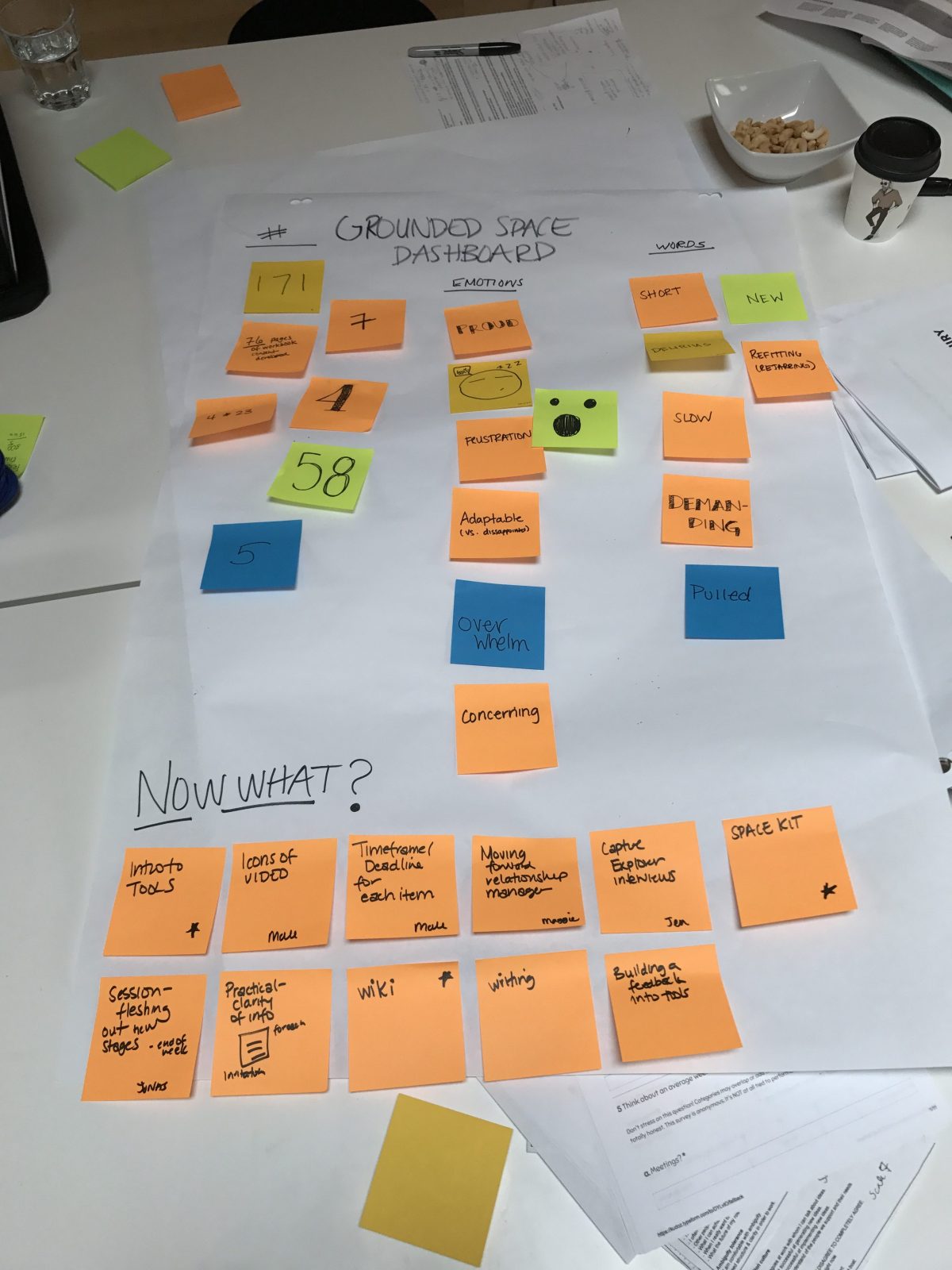
Summer hit #11
Practice what you preach.
Every Monday, we have a huddle to check up on everyone (and their work).
Every Wednesday, we will huddle quickly to get a pulse on the direction of our work.
Every Friday, we will have a reflection. The scope is both personal and professional.
Once a month, we will have a feedback session to help improve each other’s practices and ways in which they relate to one another.
Additionally, there are cultural events (i.e. movie nights, learning sessions, lunch and learns…etc. to help facilitate new relationships and new ways to see each other)
There are a series of tools that keep transparency and wide communication (i.e. basecamp, slack)
Because this is social innovation we’re dealing with, we HAVE to be able to practice the methods and theories that we’re facilitating in other organizations. This can be a rigorous process and tough to onboard new members, but they are touch points that help to create a lived and breathed culture of collaboration, transparency,
